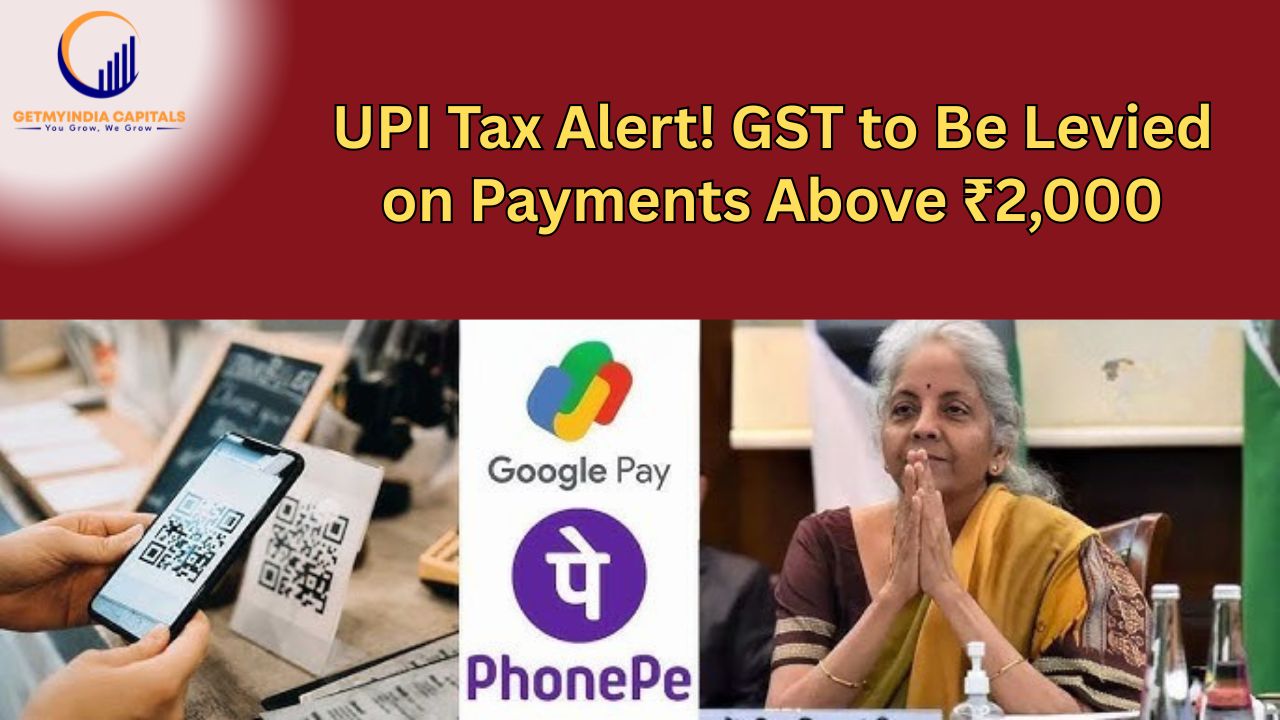Introduction
In a recent development, the Indian government is reportedly considering imposing Goods and Services Tax (GST) on UPI (Unified Payments Interface) transactions exceeding ₹2,000. This move has sparked widespread discussions among consumers and digital payment users across the country. As UPI has become a primary mode of payment for millions, this change may impact daily spending, especially for small businesses, freelancers, and middle-class families.
What Is the New UPI GST Rule?
The government is evaluating the idea of applying GST on UPI payments that cross the ₹2,000 threshold in a single transaction. The objective behind this move is to bring certain digital transactions under the formal tax framework and potentially increase GST collections.
Here’s a quick overview :
- UPI payments exceeding ₹2,000 may soon attract GST charges
- This rule could apply to both peer-to-peer and merchant transactions
- The GST rate is likely to be in the range of 18% (as with most digital services)
- Implementation timelines are yet to be confirmed
Why Is GST Being Considered on UPI Transactions?
The government is aiming to streamline tax collections across various digital services. With the rising popularity of UPI, the volume of high-value, untaxed digital transactions has increased significantly.
Reasons behind the proposed change include :
- Increased revenue generation through GST compliance
- Minimizing tax evasion in high-volume digital payments
- Formalizing digital payment systems
- Ensuring transparency in transactions over a certain value
Key Features of the Proposed UPI GST Rule
If this rule is implemented, it will bring several structural and operational changes to UPI usage. Here are the core features:
- Threshold Limit: GST to apply only on transactions above ₹2,000
- Applicability: Likely to be enforced on merchants and businesses first
- Personal Transfers: Peer-to-peer transfers may remain exempt
- Payment Gateways Involved: PhonePe, Google Pay, Paytm, BHIM, etc.
- GST Rate: Tentatively set at 18%
- Platform Charges: UPI apps may pass on the GST charges to the users
- Business Transactions: Will likely see immediate impact if paid through UPI
How will small and large merchants benefit from this ?
As the circular notes, “for all the quarters of the scheme, 80% of the admitted claim amount by the acquiring banks will be disbursed without any conditions. This means that 80% of all the claims made under this scheme by stakeholders will be honoured unconditionally. The remaining 20% will only be disbursed subject to certain conditions:
- 10% of the admitted claim will be provided only when the technical decline of the acquiring bank will be less than 0.75%;
- The remaining 10% of the admitted claim will be provided only when the system uptime of the acquiring bank is greater than 99.5%.
For large merchants, no notable incentives have been introduced. Similarly, for transactions valued over ₹2,000, no incentives have been offered, even for small merchants.
Previously, as per an NPCI circular dated December 23, 2021, the incentive rate per transaction by the government to the acquirer bank for industry programs was set at 0.15%. Notably, industry programs include insurance, mutual funds, government, education, railways, agriculture, debt collections, fuel, petroleum products, POI funding transactions, telecommunication, utility payments, business/personal services, and hospitals. For all other non-industry programs, the incentive rate per transaction by the government to the acquirer bank was set at 0.15%.
Now, the government has done away with the 0.25% category, bringing all programs under a single window for the purpose of this scheme. Says Rohit Mahajan, Managing Partner and Founder of Plutos ONE, “This program will further drive small merchants’ use of digital mediums fortransactions since UPI recorded over 14 billion transactions in February 2025 alone. In addition to increasing merchant adoption, offering a 0.15% incentive for UPI (P2M) transactions up to ₹2,000 will solidify India’s standing as a global leader in digital payments.”
GST on UPI – How the ₹ 2,000 Threshold Affects Your Digital Payments
Starting now, UPI payments exceeding ₹2,000 will be subject to Goods and Services Tax (GST). This new rule aims to formalize the growing digital payment ecosystem and ensure tax compliance. For consumers, this means that any high-value UPI transactions, like bill payments or large purchases, will incur an additional 18% GST. While smaller transactions under ₹2,000 remain unaffected, larger payments will cost a little more.
Merchants, too, will need to adjust to the new tax, integrating GST into their payment systems and ensuring proper documentation for compliance. Though the levy is intended to increase transparency and broaden the tax base, it could lead to price hikes for some goods and services. The shift will likely impact spending behavior, with consumers possibly seeking alternative payment methods to avoid extra charges. Stay informed and adjust your payment strategies accordingly.
Conclusion
The introduction of GST on UPI payments above ₹2,000 marks a significant shift in India’s digital payment landscape. While it aims to enhance tax compliance and boost government revenues, consumers and merchants alike will need to adjust to this new reality. For consumers, this means higher costs on larger transactions, while merchants will face added responsibilities in managing and remitting the tax. As digital payments continue to grow, understanding and adapting to these changes will be crucial. While smaller payments remain unaffected, it’s important to be aware of the impact on high-value transactions. In the long run, this policy could lead to a more transparent and regulated digital economy, but it may also bring challenges that both users and businesses will need to navigate carefully.
GetMyIndia.com RaysVeda.com GetMyStartup.com LawCanal.com ABHAYRAY.COM ZinCob.com

